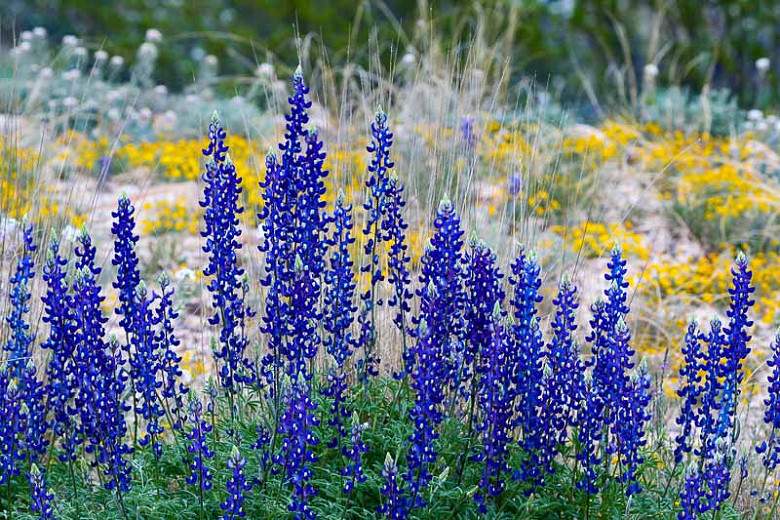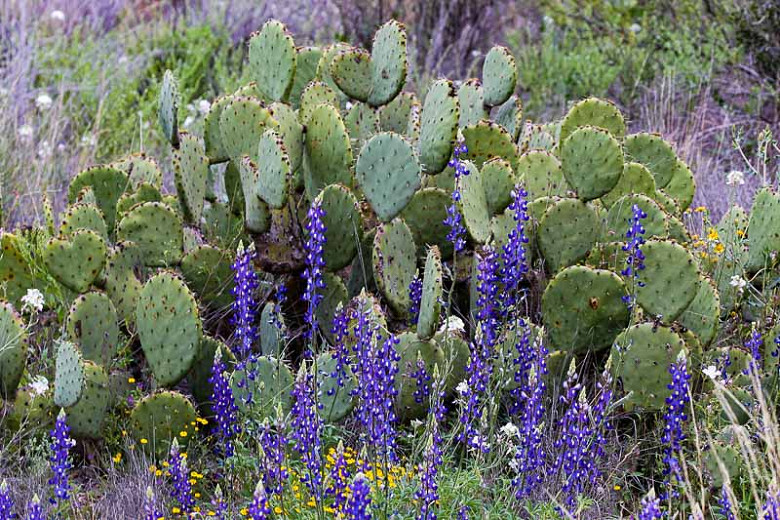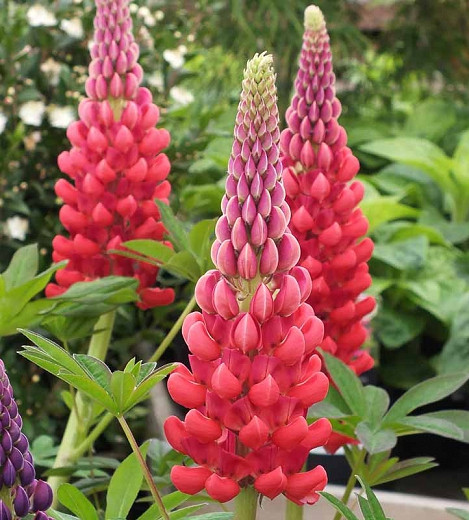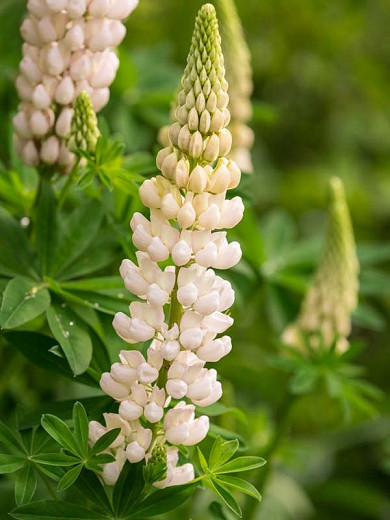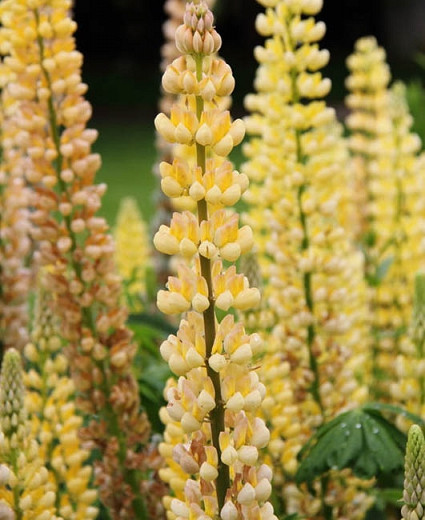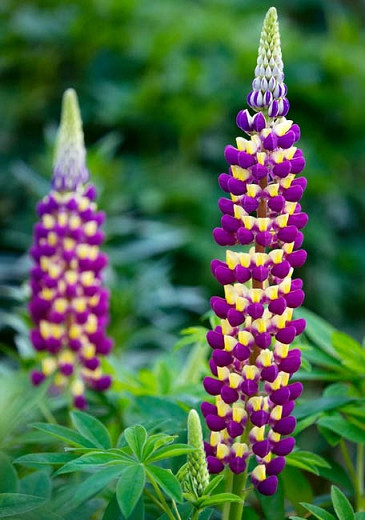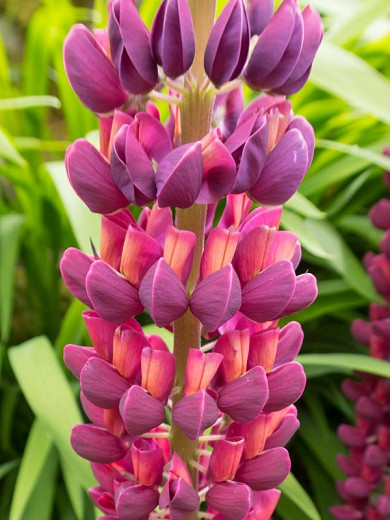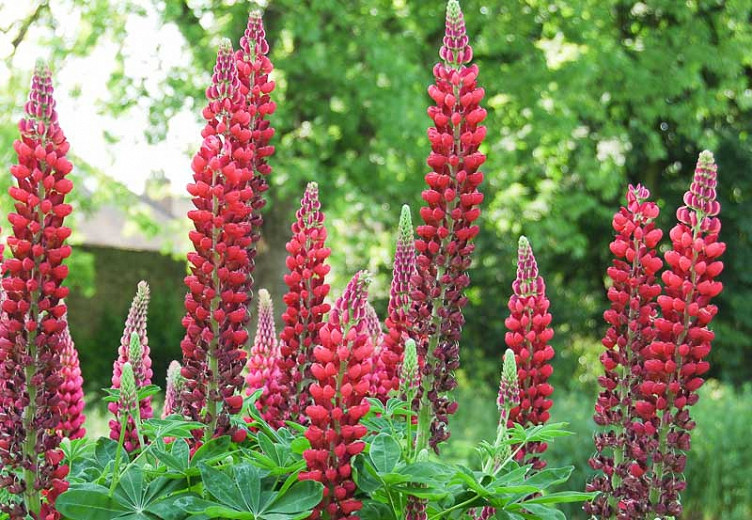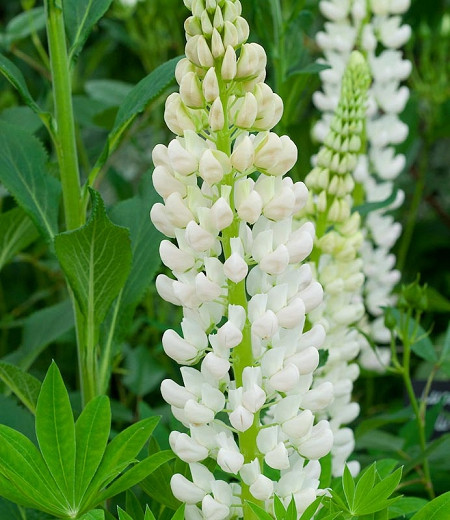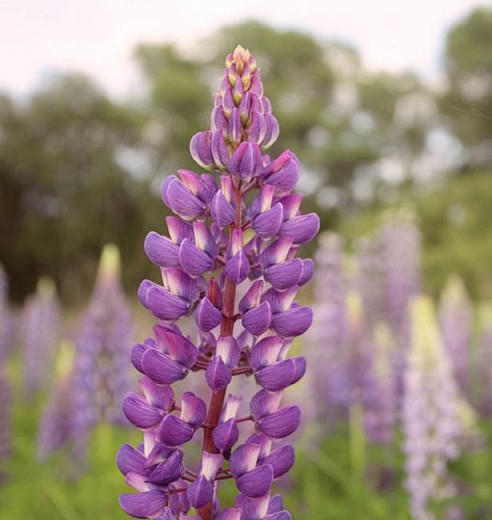Lupinus havardii (Big Bend Bluebonnet)
Native to Texas, Lupinus havardii (Big Bend Bluebonnet) is a tall winter annual boasting narrow, elongated clusters of very deep blue, pea-shaped flowers with a lemon blotch. Blooming in early to mid-spring, they are borne on the upper 4-8 in. (10-20 cm) of stout, ascending stems, well above the foliage of palmate leaves.
Native to Texas, Lupinus havardii (Big Bend Bluebonnet) is a tall winter annual boasting narrow, elongated clusters of very deep blue, pea-shaped flowers with a lemon blotch. Blooming in early to mid-spring, they are borne on the upper 4-8 in. (10-20 cm) of stout, ascending stems, well above the foliage of palmate leaves. Each leaf is divided into seven leaflets with pointed tips. Lupinus havardii is the tallest Bluebonnet and looks breathtaking when planted in mass. Excellent cut flowers.
- Grows up to 1-4 ft. tall (30-120 cm) and 18-24 in. wide (45-60 cm).
- Thrives in full sun in poor, gravelly, sandy, dry, well-drained soils. Water regularly in the fall until the seed germinates.
- Low maintenance and highly disease and pest free, this plant is also drought tolerant.
- An excellent choice for flower borders, cottage gardens, prairies, and meadows.
- Propagate by seed in the fall. The plants need to overwinter to bloom. Germination is enhanced if the seed is scarified or soaked in warm water overnight.
- All parts, particularly the seeds, may cause severe discomfort if ingested. Toxic only if eaten in large quantities. Wear gloves and wash your hands after handling.
- Toxic to dogs, toxic to cats, toxic to horses, toxic to humans.
- Native to Texas.
Requirements
| Hardiness | 7 – 9 |
|---|---|
| Plant Type | Annuals |
| Plant Family | Lupinus – Lupines |
| Exposure | Full Sun |
| Season of Interest | Spring (Early,Mid) |
| Height | 1' – 4' (30cm – 120cm) |
| Spread | 1' – 2' (30cm – 60cm) |
| Spacing | 18″ – 24″ (45cm – 60cm) |
| Water Needs | Low |
| Maintenance | Low |
| Soil Type | Loam, Sand |
| Soil pH | Acid, Alkaline, Neutral |
| Soil Drainage | Well-Drained |
| Characteristics | Cut Flowers, Showy |
| Native Plants | United States, Southwest, Texas |
| Tolerance | Drought, Dry Soil |
| Attracts | Butterflies |
| Garden Uses | Beds and Borders |
| Garden Styles | Informal and Cottage, Prairie and Meadow |
